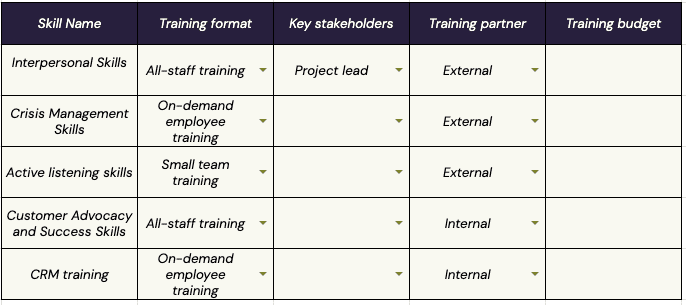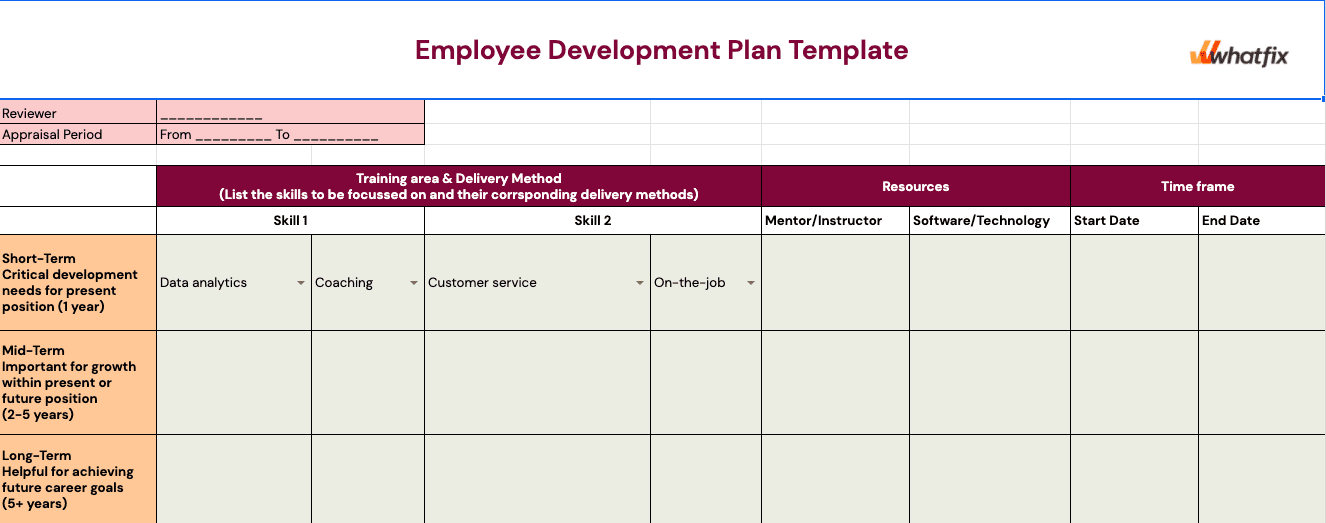
Many organizations struggle to build a structured and efficient training process from scratch. To ease the process, companies can use prebuilt templates and checklists as a start to create scalable and productive training programs. Here are a few types of employee training templates.
New hire training is essential to help new employees start on the right foot. This training plan is implemented for practical reasons such as providing insights into the job role, familiarizing with company policies and procedures, demonstrating enterprise tools, etc.
An effective new-hire training plan helps eliminate the new workplace jitters, uncertainty, and low morale that new hires might feel if they’re not adequately supported in their initial days. Templates created for new-employee training are utilized to ensure an organization’s success in these programs.
Get your new hire training template now!Get access to a comprehensive employee training checklist to kickstart your new hire training program.
Download nowCreating a training needs assessment plan before launching a training program lay the necessary groundwork to understand an organization’s actual need for specific training programs and make decisions based on measurable outcomes to achieve better ROI.

An employee training plan is a document that details a training program and outlines the goals, learning outcomes, training methods, strategies, and curriculum for training employees across the organization.
Get a customizable copy of Employee Training Plan template! ✓ Thank you, the template will be sent to your emailEmployee development plans are proactive, forward-looking action plans for employees to acquire new skills and competencies. They’re driven by a set of goals that employees wish to achieve to improve their jobs and advance in their careers.

We have gathered some of the most comprehensive and high-quality employee training templates and checklists to help you design a dynamic, scalable training process for your organization. These templates will help you identify and focus on key employee development areas.
Training Plan Templates
Post Employee Training Templates
Employee Training Plan Templates for Different Training Programs
Here are a few tips for building an effective employee training plan.
Conducting a training needs analysis is a crucial step of your employee training plan to develop effective training materials and make the best use of your production time.
A training needs assessment helps identify who needs to be trained, the gap in skills, and the type of training that will fill the training requirements. A needs assessment is conducted through research, interviews, internal surveys, observations, etc.
An employee training plan contains the long and short-term measurable outcomes that employees are expected to achieve after completing a training program. These objectives communicate the tangible benefits of the training in a way that engages and resonates with employees.
When developing training objectives , make sure metrics give the whole picture, including quantity, quality, time, cost, and effectiveness and are aligned with overall business goals.
The next step in the employee training plan is to choose a suitable employee training method ideal for the overall organization and individual team members. To find the most appropriate employee training method for your training program it is crucial to understand the learning style of your employees.
Other important factors to consider for narrowing down the training method selection are – training objectives, goals, cost, timeline, organization’s culture, size, remote or office-based environment, etc.
For instance, smaller companies prefer in-person training programs more cost-effective, whereas larger enterprises or distributed companies benefit from online self-paced training that requires less coordination.
Some of the most common employee training methods are:
Investing in employee training software empowers HR teams and people managers to create and assign training courses to employees and monitor progress and track completion rates. These tools standardize the employee training procedure across the organization and use various interactive learning techniques to engage employees. Here are a few examples of training technology companies can invest in
Your training budget is allocated for your L&D program’s implementation based on the training needs and training methods. This budget includes paying for the trainers and their travel expenses, setting aside a place for hosting a workshop or seminar, paying for the training software, and other additional resources such as paper, ink, print materials, extra educational programs.
To understand whether or not your employee training plans are working, determine if the learning objectives are met at the end of the training. Consider the following methods to measure the effectiveness of your employee training plan: